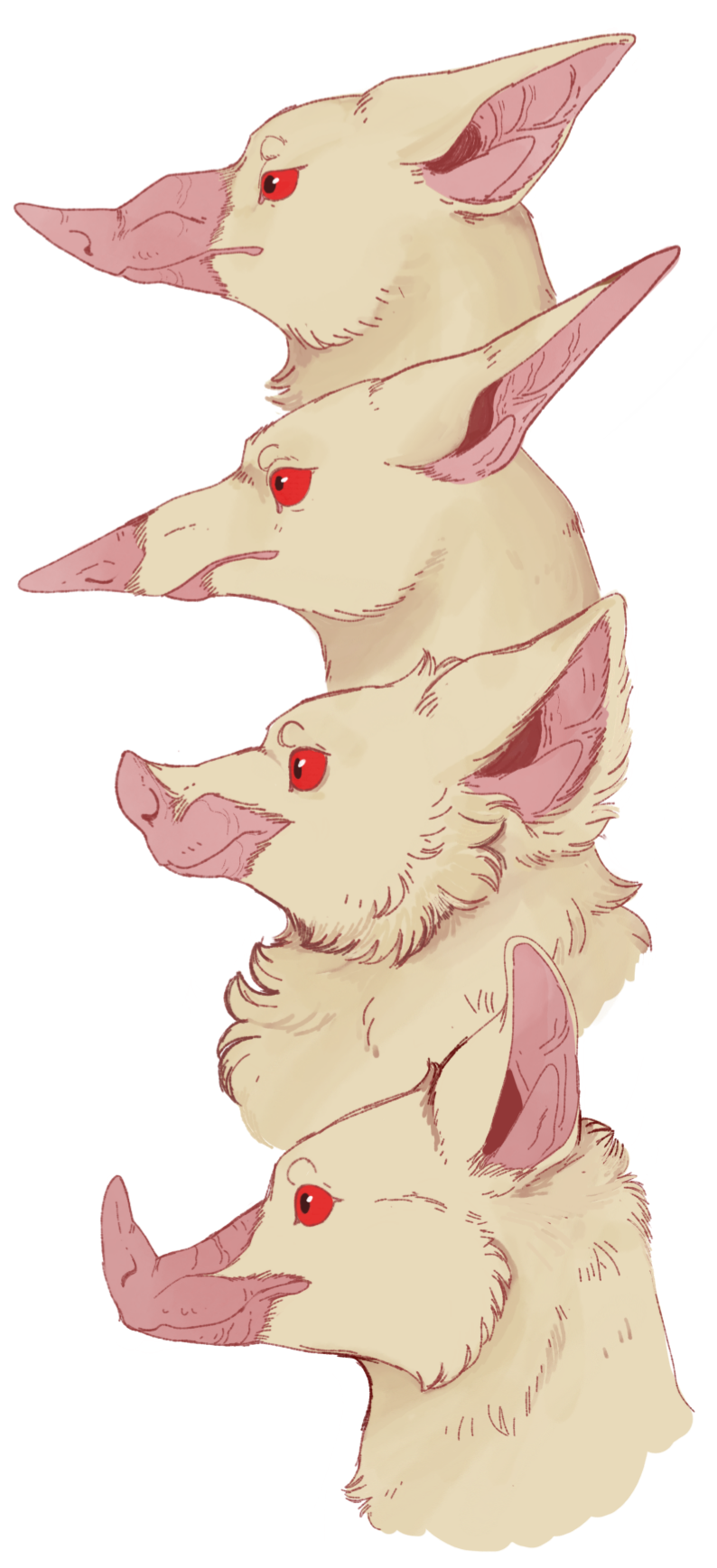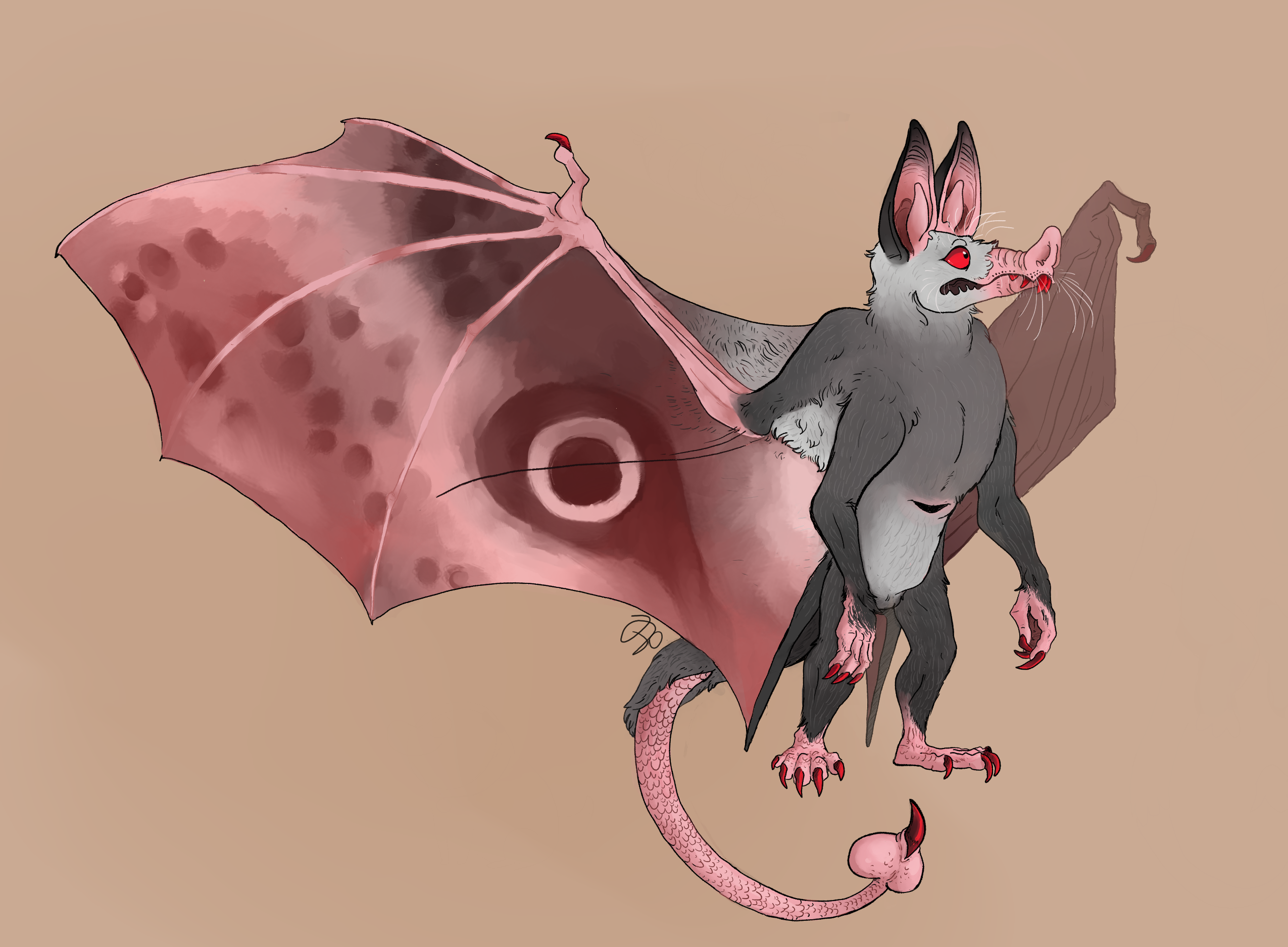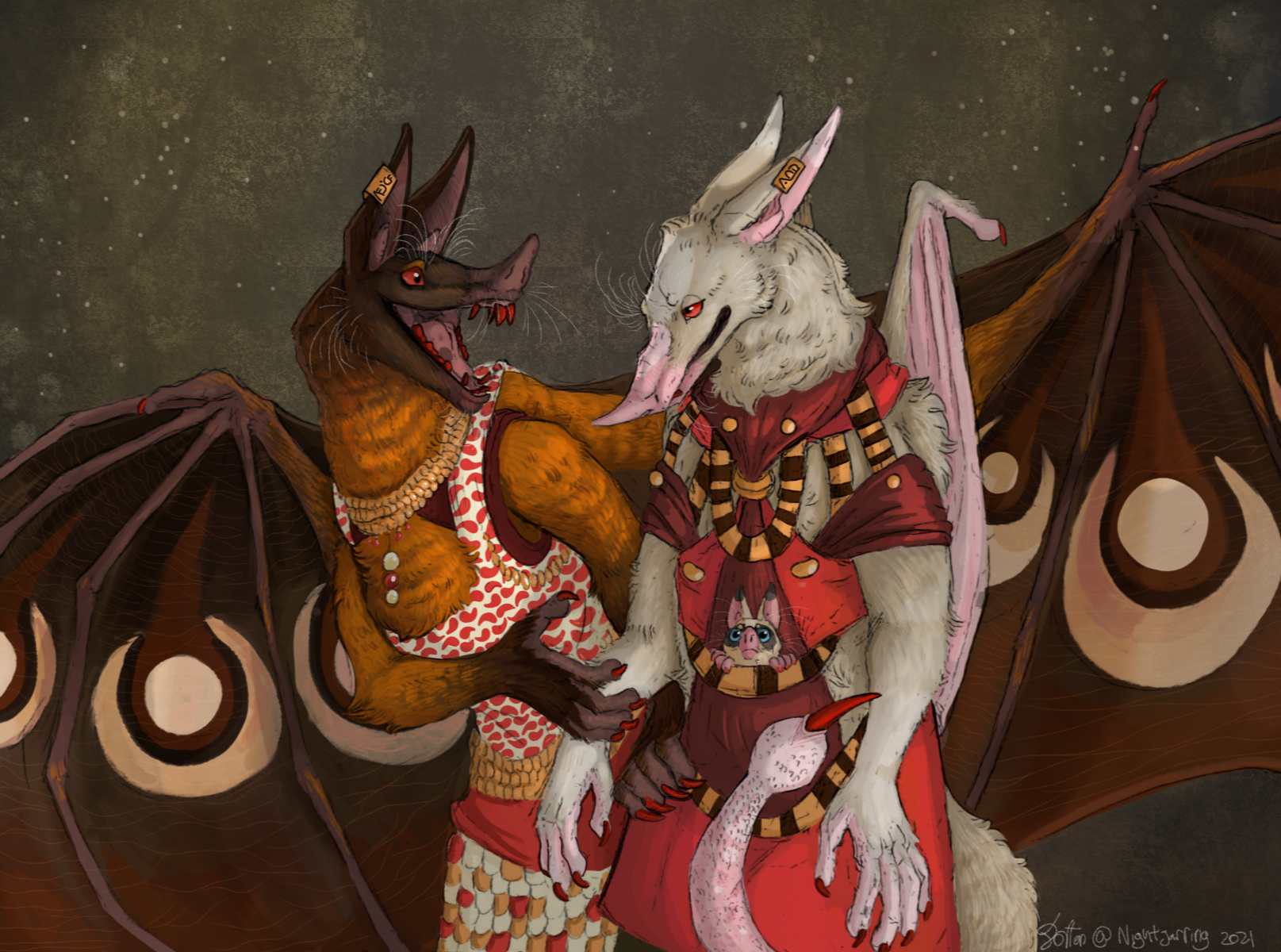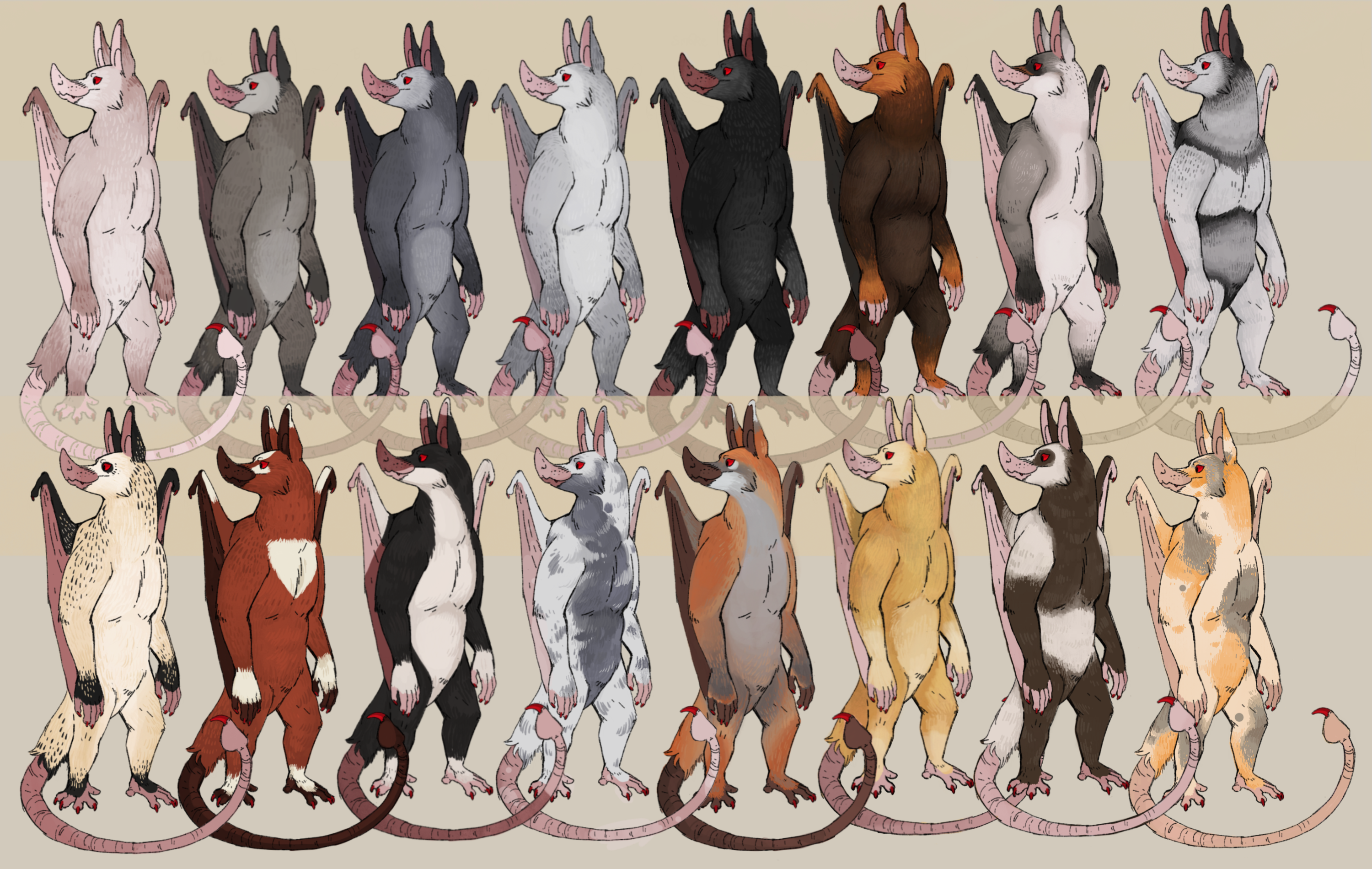The vuxte/ˈvʌkst/ are
descended from aerial pack hunters that took down large prey with the combined power of teamwork,
sharp teeth, and hemolytic venom. The megafauna they evolved to hunt were driven to extinction by the
expansion of Sarchiscapes within their home canyon, but the clever vuxte survived through the
development of ranching and other animal husbandry techniques. They can be found in
Pyr and other cities in the 45th coil. No-one really remembers which
crack that homeland actually was at this point. In most cities, the Vuxte populations are so old and well
established that they all think of their current home as the original one.
Anatomy

Senses
Vision: Vuxte vision is trichromatic. They’re pretty good at seeing red in particular, but other
colors tend to be muted. Their low-light vision is quite good, however. Since they evolved to hunt game
from the air, they’re adept at detecting even tiny movements from great distances, yet struggle to form
a clear picture of anything nearer than 10ft.
Hearing: Vuxte have excellent hearing; they can detect ultrasonic frequencies well above the
range of most other races. It’s very common for blind vuxte to develop acute echolocation, something
that's actually already present to a lesser degree in any adult with normal hearing, which mostly
makes up for their poor close-range vision. The saying “There’s no room darker than a silent one”,
while seeming vaguely political, actually references the fact that a deaf vuxte is facing a more
significant impairment than one who cannot see.
Smell: Perhaps their best sense of all, the vuxte nose is extremely sensitive. They can smell even
small quantities of substances from great distances, and are skilled trackers. They can even smell the
hormones other vuxte exude in their sweat, and it's common for them to sniff each-others noses (an extremely
prominent area of bare skin with quite a lot of sweat glands) as a way of checking someone’s emotional
state. This can be a gesture of curiosity or concern, but can also take on an intimidating, even
threatening tone when done by someone outside of one’s immediate family.
Smell is the vuxtean sense that is most commonly overwhelmed, too many strong scents can quickly become
nauseating. To combat this, vuxte often carry blends of potent herbs with them in pouches or flasks,
which they can sniff in an attempt to ‘reset’ their olfactory glands. Some outside observers have taken
this to mean that the whole vuxtean population has a rampant drug problem, which is nonsense, but has
nevertheless been found useful by quite a few propagandists. Although demonstrably innocent, whether
or not herb-sniffing truly works at its intended goal is debated by some, though many people swear by
it, and it's a practice unlikely to be abandoned any time soon.
Taste: The vuxtean sense of taste is relatively weak. They’re quite fond of the taste of salt and
iron (the latter of which gives their teeth, nails, and stingers that characteristic blood-red gleam),
butin many cases they seem almost indifferent to flavour. This means vuxtean cuisine has acquired a bit
of a reputation for being pungent, and they seem perfectly happy to eat food that seems to others to be
soured or on the verge of rotting. Many also tend to prefer food that offers interesting or stimulating
tactile experiences. A shellfish that one must crack open with their teeth, or a paste that must be
licked out of a ceramic orb are, to many, better meals than something that tastes the same, or even
better, but is presented in a less entertaining way.
Touch: In many ways the Vuxte sense of touch is quite average. Their most sensitive areas are
mostly those you’d expect: hands, feet, noses, lips, all the bits they use to interact with the world.
They also have prominent whiskers, which are not only sensitive to touch, but temperature, air pressure,
and vibrations as well. The skin of their wings is also sensitive to the pressure and movement of air,
allowing deft responses to wind conditions during flight.
Locomotion
While vuxte can walk upright, they're only facultative bipeds, and prefer quadrupedal locomotion in situations that are either very casual or very urgent. Vuxte who habitually walk upright usually do so to appear more civilized (and also larger than) bipedal races like haruspers, who see their preferred method of movement as animalistic and uncivilized. In a standing position, most vuxte range from 4-5ft tall, with wingspans between 10-12ft. They're somewhat clumsy fliers, and have difficulty taking off from the ground, preferring to leap from ledges or other high places. Vuxte are also adept climbers; Their hands, feet, and wings all have opposable halluces. Their tails are prehensile, capable of picking up and carying objects, though not nearly as dexterous as their hands or feet, naturally. While pups can easily support their body weights with their tails, fully grown vuxte are tragically too heavy to safely pull this off.
Diet
Vuxte are obligate carnivores, meaning they require heavily meat based diets, and are
well equipped to eat it raw. Meat certainly isn't the only thing they eat, however: other staple
proteins include eggs, insects, and certain nuts. Fruits, vegetables, and tubers are also on the
table, though they eat these in lesser proportions. Since they nurse their young, they're also capable
of enjoying dairy, something that makes them unique amongst the inhabitants of Pyr.
Another adaptation, present in many of their relatives as well, is their offspring, which are born
underdeveloped and fetus-like. For the first few months, pups are kept in a pouch on their belly to
nurse, but begin to be left in the care of relatives once they get large enough to hinder flight.
This strategy allowed ancestral vuxte to circumvent the excess weight of pregnancy, and reduced the
risk of the infant mortality brought about by injuries the mother may have sustained while hunting
or otherwise away from the safety of home.


